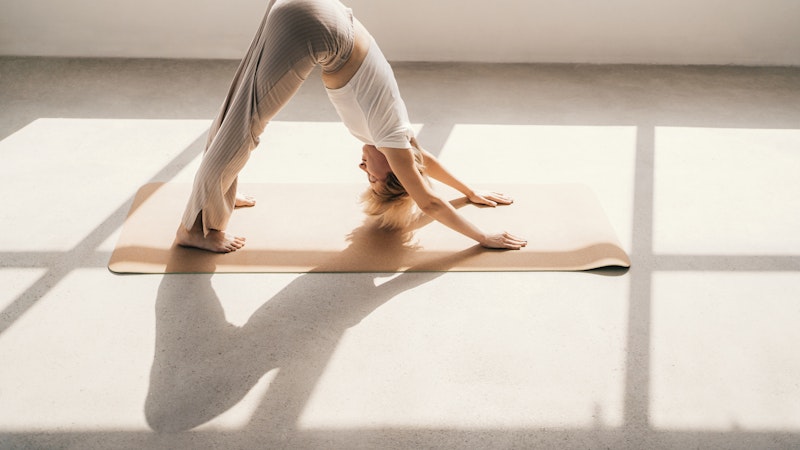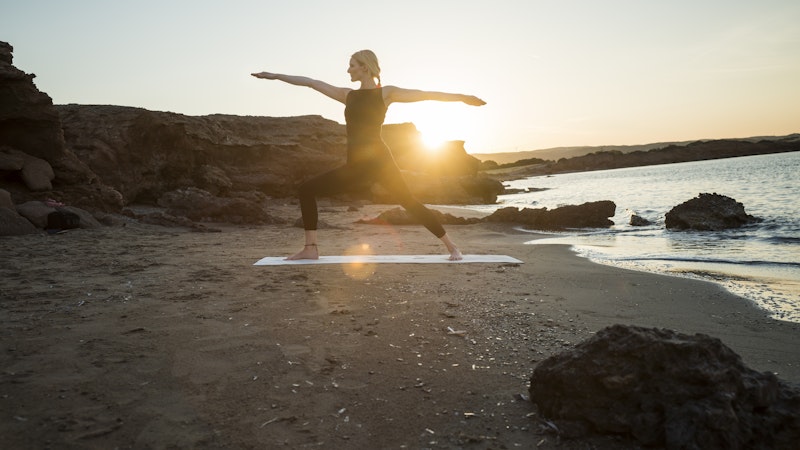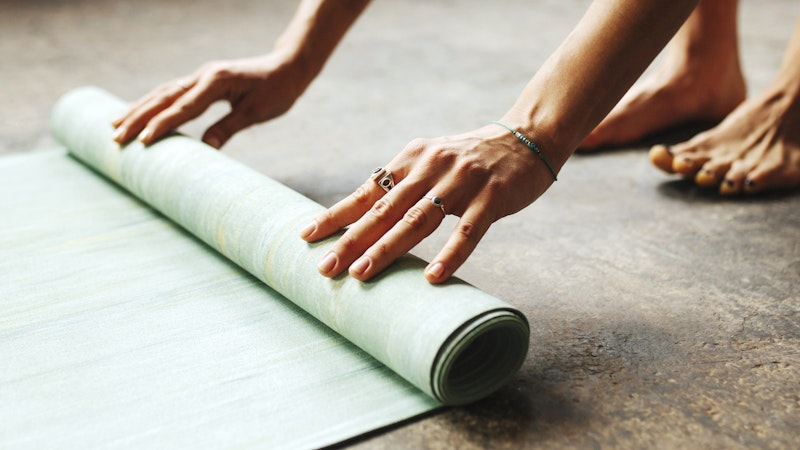Wellness
Which types of yoga suit you best?

Zoom in on the different types of yoga to find the one that suits you best

Wellness

Zoom in on the different types of yoga to find the one that suits you best
Have you ever wanted to try yoga? This ancient discipline stems from an Indian philosophy that began as far back as the third millennium B.C.!
Now widely developed in the West (in both its original and adapted forms), this all-encompassing practice focused on body and mind features a wide variety of exercises and techniques to enhance self-awareness and bring about profound well-being. There is not one single form of yoga, but many different types. Nicolas Pauliat, hydrotherapist and yoga teacher at the Sofitel Quiberon Thalassa Sea & Spa , agreed to share his secrets with us.
Yoga is a comprehensive spiritual and physical discipline designed to free the mind from the constraints of the body through the mastery of movement, rhythm, and breath. Yoga consists of physical postures (called Asanas), breathing (Pranayama), and meditation (Yoga Nidra). It acts upon the energetic, digestive, respiratory, cardiac, and hormonal systems of the body.
“Regularly practicing yoga enables you to achieve physical, mental, and emotional balance.”
We live with unprecedented levels of comfort and yet, surprisingly, we have never been so unhappy and tormented. The problem, short, is within us. To feel good, we need to understand how we function. However, we tend to neglect the way our minds work.
Three sources of tension can affect us and have a major impact on our physical well-being:
1. Emotional tension (disappointment, fear, guilt)
2. Mental tension (worries, obsessions)
3. External stressors (stress, falls)
Someone going through a period of intense stress may feel depressed or angry, and may even lose their self-confidence. They might feel breathless, be unable to sleep, have negative thoughts, and their nervous system can be placed under extreme pressure.
“Maintaining good health starts with knowing how to look after your body and mind.”
The practice of yoga helps us to move towards a more serene and balanced life thanks to greater self-knowledge.
However, we tend to confuse happiness with pleasure, and this latter aspect can make us lose our way. We find ourselves constantly desiring what we do not have. With this in mind, yoga is a form of self-awareness that focuses on contentment – knowing how to accept what we have and grow. Learning to know yourself, to listen to how you function, to accept your faults and qualities, and to build on these qualities to evolve.
“I often use the metaphor of a garden. Our interior is a garden in which we are the gardeners. We plant what we want. If we take good care of it and fertilize it regularly (with a healthy diet, a healthy lifestyle, etc.), we harvest beautiful plants, trees, and fruit. If we do not take care of it, then weeds will grow in the soil and maybe even take over.”
Yoga is extremely comprehensive. Some postures gently strengthen the muscles, while others work on balance and flexibility in rhythm with the breath. Whatever the type of yoga practiced, including Hatha, Bikram, Kundalini, and Yin, the focus is constantly drawn back to the breath. Yoga can help you learn to breathe better, develop your powers of concentration, resolve certain hormonal problems and, last but not least, get a better night’s sleep.

While sport energizes and revitalizes the body, it rarely completely calms the mind. With yoga, you feel calm, relaxed, peaceful, and at ease in your body, which will be simultaneously softened, toned, and energized. The feeling of well-being is very powerful.
“Practicing yoga is very gentle on the body and life-saving for the mind.”
Regular exercise does not exclude a daily yoga practice, and vice versa. The two complement each other perfectly.
Our customers come to Thalassotherapy centers for a wellness break. The introduction to yoga that we provide makes them aware of the benefits of the discipline. We invite them to be attentive to every feeling, and these initial classes often inspire them to make yoga part of their daily wellness routine.
Sessions (whether individual or in small groups of ideally 5 or 6 people) are led in a studio or outdoors, weather permitting. We are fortunate to enjoy a privileged setting overlooking the sea.
1. Each session 1. starts with an introduction, designed to stabilize the body for 2 or 3 minutes.1. This bodily awareness is achieved in a seated position, with the eyes closed if possible. It allows us to clear our minds, to cut ourselves off from any activities that we were doing just before. It prepares the body for the postures by rooting ourselves in the present moment, fully aware of our breathing.
2. Then2. 2. come 2. the postures and sequences (lasting around 30 minutes), such as 2. the renowned sun salutation.
“It is important to experience and feel each posture while making sure to breathe correctly.”
1. The practice then moves on to a 1. breathing phase (pranayama1. , 10 minutes), during which breathing techniques are essential for 1. deepening internalization and acting on the mind1. . This inner journey is an invitation to let go.
2. This is followed by 5 to 10 minutes of 2. relaxation (2. Savasana 2. in Sanskrit) 2. lying2. 2. on the back, with the aim of surrendering the entire body to the ground while maintaining complete awareness.
3. Lastly, you return to a sitting position.
At the end of the session, there is no need to talk explicitly about the benefits, because they can be felt and experienced. There is nothing intellectual about yoga; it is all about living in the present moment and making the most of what you feel.

Yoga is more than just a physical discipline; it is a beneficial, holistic practice that can be integrated into your daily routine to promote a balance between body and mind. Ideally, yoga should be practiced as regularly as possible, following the initial guidance of a qualified instructor to ensure a correct and safe approach.
Contrary to popular belief, yoga not only trains the body, but also the mind, which is often overlooked in our busy daily lives. And just like any workout, consistency is key: the brain, like a muscle, requires regular training to develop strength and resilience. The more you practice yoga, the more at ease you become physically and mentally.
What are the five different styles of yoga?
There are many different types of yoga. It is important to find the style that suits you best. It depends on our potential, our physical and mental fitness, but also on the goals we set ourselves. If you take a class with an experienced teacher, you will be able to do the exercises safely, without the risk of injury.
Hatha Yoga is often considered the best choice for beginners because of its gentle, accessible approach. This is the most widely practiced form of yoga, combining breathing, postures, and meditation, making it easy to enjoy a complete introduction to yoga. Ideal for those seeking a balance between body and mind, Hatha Yoga allows you to progress at your own pace, making the practice beneficial both physically and spiritually. This is an excellent way to start, providing a solid foundation for exploring other styles of yoga.
Kundalini Yoga aims to awaken the kundalini, considered the fundamental and original energy within all of us. This unique practice is characterized by dynamic sequences of postures, enriched by the recitation of specific mantras. By mobilizing this energy, Kundalini Yoga offers a profoundly revitalizing experience that stimulates both body and mind.
Ashtanga and Vinyasa represent different facets of yoga practice, each offering a specific level of dynamism. Ashtanga and Vinyasa are characterized by fluid, rhythmic sequences of postures, where movement is synchronized with the breath. These styles are physically demanding, strengthening the body, improving flexibility, and boosting the cardiovascular system thanks to the speed of the sequences, while also encouraging the elimination of toxins through perspiration.
Yin Yoga and Yoga Nidra offer approaches focused on meditation and deep relaxation – perfect for those looking to calm the mind and relieve stress. Yin Yoga in particular is based on a slow, gentle pace, with postures held for longer periods to work deeply on connective tissue and promote a meditative state. This practice bridges the gap between physical exercise and meditation, helping to create a balance between body and mind.
Yoga Nidra, on the other hand, is a form of guided meditation practiced in the reclined position, designed to induce a state of deep relaxation comparable to restful sleep. Renowned for its effectiveness in bringing about total relaxation, Yoga Nidra is especially beneficial for people dealing with stress, fatigue, insomnia, or other disorders. It is often said that a single session of Yoga Nidra can be equivalent to several hours of deep sleep, offering unparalleled rest and mental regeneration. These two styles of yoga are therefore ideal for integrating moments of calm and relaxation into your routine, contributing to better stress management and improved overall well-being.
Often referred to as Hot Yoga, Bikram Yoga stands out from the others by being practiced in a room heated to around 40°C with 40% humidity. This intense form of yoga consists of a series of 26 postures and two breathing exercises, designed to work every part of the body. The heat facilitates stretching, improves blood circulation, and helps eliminate toxins through perspiration, providing a deep detoxification of the body. When practiced regularly, Bikram Yoga can relieve a variety of ailments, such as back pain and joint and muscle stiffness, and can contribute to improved stress management. The intense heat also encourages greater concentration and mental stamina, strengthening the connection between body and mind. Although the practice may seem demanding, it is accessible to those of any fitness level. Each person will progress at their own pace and according to their own abilities. Bikram Yoga is an invitation to push your limits, improve your overall health, and discover a new form of well-being.
Prenatal Yoga is specially designed to support expectant mothers throughout their pregnancy, responding to their unique needs during this time of change. Sessions revolve around adapted postural and breathing exercises, aimed at relieving discomforts commonly experienced in pregnancy, such as back tension, fatigue, and emotional fluctuations. As well as providing physical support, prenatal yoga offers a space to strengthen the bond between the mother and her unborn baby, while preparing the body and the mind for the challenges of childbirth.
Practicing prenatal yoga also contributes to faster postpartum recovery, helping the woman to regain bodily balance and reduce stress. Exercises are carefully chosen to ensure the safety and comfort of the mother-to-be, while helping her to maintain optimal physical and mental fitness. This gentle yet effective approach makes prenatal yoga an invaluable resource for a fulfilling pregnancy and preparing for the arrival of the child in the best possible conditions.

The factors that can make us put on weight are genetic, compulsive, and dietary. Stress can also lead to weight gain. The starting point for weight loss is therefore to adopt a healthy, balanced diet and move away from compulsive behaviors.
Like any other physical activity practiced on a regular basis, yoga enables us to refine and strengthen our muscles. By improving the well-being of body and mind, it has a virtuous circle effect on the quality of our sleep and helps us to combat stress, while limiting compulsive behaviors and reinforcing our body’s capacity for elimination.
Yoga does not actually build muscle mass, but it does shape, sculpt and tone the whole body. Some postures have more of a toning effect than others.
To build muscle, it is best to combine weight training (at the risk of losing some of your flexibility) with yoga, to add in an aspect of focus and suppleness.
As you can see, yoga is for everyone, and it really pays off when practiced regularly. By helping us to find our own balance and inner calm, this ancient discipline enables us to refocus on ourselves and discover who we really are. It gives us the energy to achieve our goals with determination and serenity.